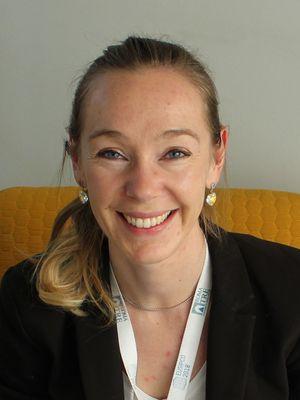Yubik: optimising the development of embedded applications
Date:
Changed on 25/10/2022

A new star has just appeared in the deep tech sky: Yubik, supported from the outset by Inria, is a start-up that has developed a program for assisting with the design of embedded and cloud applications. What makes this product original is that it enables developers to design the best possible architecture automatically, meeting requirements when it comes to energy use, execution speed, how much memory is allocated, the necessary equipment and development time. In short, design is optimised to the maximum extent possible, helping to cut costs and environmental impact.
This innovation has attracted interest from manufacturers in the consumer electronics, defence and telecommunications sectors. Yubik has really taken off since Bouygues Telecom Flowers invested in the start-up, with the French global telecommunications operator selecting the project as part of its diversification programme Flowers.
At the reins of this brand new digital start-up, Justine Bonnot, a researcher in IT and Signal Processing, has been in charge of the project for the best part of three years. It was Olivier Sentieys, from the University of Rennes Inria centre, who gave her the idea of transforming an innovation developed through academic research into a commercial product. The Head of the Cairn project team, this researcher specialises in the development of high-performance and energy-efficient IT architecture. He had been keeping a close eye on the work carried out by Bonnot, who was completing the third year of her PhD at the time.
Supervised by Daniel Ménard, working at the IETR (Institute of Electronics and Digital Technology) laboratory at the INSA Rennes, the scientific results she had just produced were promising. “Software optimisation is becoming a major constraint for many embedded systems, including smartphones, microsatellites and connected objects”, explains Justine Bonnot. “However, there is no solution for quick and easy optimisation of applications, something which can soon become quite complex! I have worked on mathematical methods which can be used to model development options and optimise the choices available, factoring in the constraints developers are subject to (energy management, optimising processors, and so on).”
Instead of publishing the latest fruits of their research - research which had already been widely shared with the scientific community in previous years - Justine Bonnot and her supervisors opted to take a different route: launching a company. “We had a prototype and thought that testing its practicality would be a different challenge from publishing”, recalls the young researcher turned entrepreneur. “I tried to gauge its potential by speaking to a number of industrial experts: I was somewhat naive in contacting them individually to discuss a tool that was still being developed!” Their decision to go down this route, extended at the Design Automation Conference, held in Las Vegas in 2019, proved to be the right one: the PhD student and her software were very well-received.
And so the project took off, but there was still a lot to do in order to transform research work into a usable commercial product. Not long after completing her PhD, Bonnot set about launching a company, coping with the challenges related to innovation management thanks to training provided by French Tech. She was given support from Inria through the institute’s Startup Studio programme which, in addition to paying her salary during the software maturation phase, also gave her access to the institute’s resources. Justine Bonnot is very humble when it comes to her success: “I received support from Loïc Besnard, an Inria engineer, who made a huge contribution to industrialising the software: without him, that process of maturation would never have been possible”.
2022 will be the year Yubik really takes off, and although the young entrepreneur is calm about the challenges facing her, there is also a degree of impatience.
Image

Verbatim
Our technology is mature and must now prove itself in the real world: we want to show that the software is operational and robust, and that it can be adapted to different needs and environments. We are looking into the possibility of different tests and applications, meeting detailed and demanding design briefs.
Auteur
Poste
Founder of Yubik
Yubik is seeking industrial partners to offer its bespoke services to, and intends to demonstrate performance levels using costed data on factors such as energy efficiency and development time.
From a technical manager and commercial strategy consultants to development engineers, the start-up will need to build a team of specialists over the coming months, and have set themselves the target of having around ten individuals on-board by the end of the year. “We will be launching a CIFRE PhD at the start of the new academic year, and a second one next year (for anyone who might be interested!)”, explains Bonnot. “The project has its roots in academic research, which I am fully aware of. We want to bridge the gap between advanced research and industrial applications, a key part of our development strategy.” But there is an economic objective on top of this scientific ambition: Yubik is also seeking to develop its software short-term in order to provide services in the field of hosted applications - like “Cloud” solutions.
An engineer with a PhD from the INSA Rennes, Justine Bonnot saw herself going on to become an airline pilot while she was taking her classe préparatoire.Although that dream has yet to become reality, this has paved the way for fascinating opportunities and the chance to head up a project that is equally exciting.